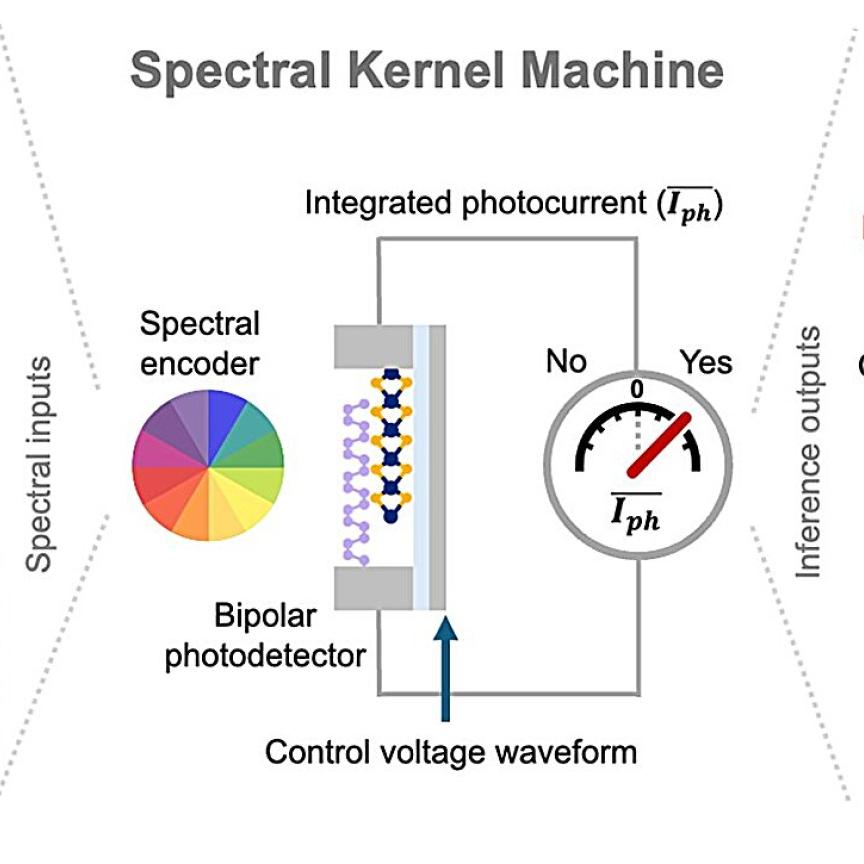Upon its 2019 release, Ushio’s Spectro series of broadband LEDs caught the attention of machine vision manufacturers by setting a new broadband LED optical output power record of 160 mW. Not content to accept the record as the limit of its broadband achievements, Ushio has broken the record once again. In 2021, the new and improved Spectro LED series has been unveiled with an extra 20 mW of power added to the existing package. The updated indium gallium nitride (InGaN) chip achieves a new record output power of 180 mW, at 500 nm – 1,000 nm.
The 1 mm2 chip simultaneously emits a total broadband visible and near infrared (NIR) spectrum, from 400 nm to 1,000 nm. The SMBB package also features excellent heat dissipation abilities and a choice of lens options.
Ushio’s Spectro LEDs are ideally paired with photodetector sensors and spectral imaging cameras. Capturing the spectral absorption properties of common materials allows automated systems perform categorization, quality assurance, and other sorting tasks. Potential applications include detecting moisture content within an object, such as in optical food sorting applications, or monitoring the fill level of a medicine bottle.
Developed in Kyoto, Japan, the Spectro Series has proven popular in the food and medicine production industries. The absorption characteristics of near infrared (NIR) light differ from one substance to another, so these LEDs lend themselves well to applications such as determining the type and quantity of a substance.
Simultaneously identifying multiple materials, each with a different peak light absorbency, is possible by deploying separate LED and sensor packages to illuminate and detect each respective material independently. A popular solution for this is Ushio’s multi-chip SWIR packages, such as the Epitex D series. The D series can house up to three narrowband chips, each emitting a different wavelength.
So why would you need a broadband LED? One reason to choose a broadband LED light source is the wider range of wavelengths simultaneous emission. By using complimentary metal-oxide semiconductor (CMOS) sensors to detect how much of the broadband emissions are absorbed, it is possible to identify multiple materials within a substance while only using one broadband light source. Not only can does this technique make it possible to recognize multiple contents within an object, the data gleaned from the analysis can provide accurate quantitative measurement.
Potential applications for Ushio’s Spectro broadband LEDs
There are many potential applications for Spectro broadband LEDs, such as checking the sugar content of a soft drink or monitoring blood oxygen saturation. Since the broadband output includes wavelengths in the visible spectrum, more applications are able to utilize broadband LEDs. The spectral emission of Spectro is roughly in-line with the spectral sensitivity of the CMOS photodetector typically employed in common sensory devices. This offers incredible possibilities for implementation such as the sorting of items by material, colour, or the detection and removal of foreign matter from a production process.
Miniaturization continues to progress while high expectations of portable devices have become an outright demand by consumers and industry bodies alike. Until fairly recently, many LEDs on the market were able to eliminate the bulky size and excessive heat issues synonymous with halogen lamp solutions; but only offered a relatively weak output in comparison.
The broadband LED Spectro series offers a higher power, and consequently, measurement applications can become even more accurate. The construction of the SMBB package means that there is no need for a heat-dissipation jig to accompany it. Multiple LEDs are also no longer necessary to cover a hyperspectral wavelength band, thanks to the implementation of a phosphor that features a continuous spectrum extending from violet-visible to NIR.

